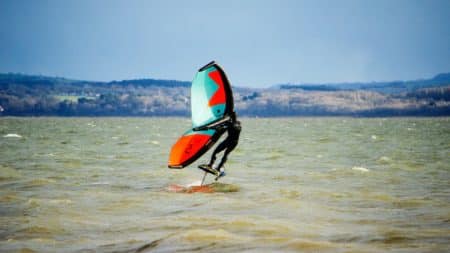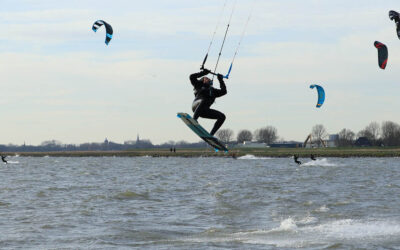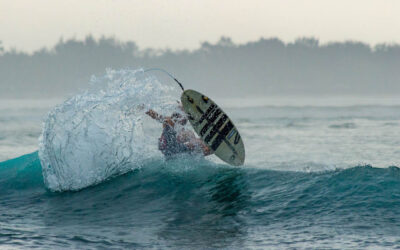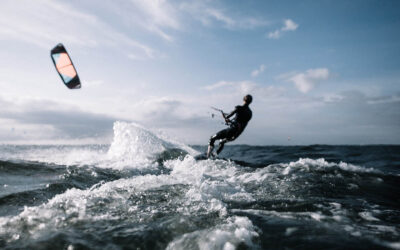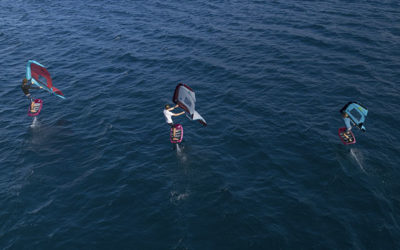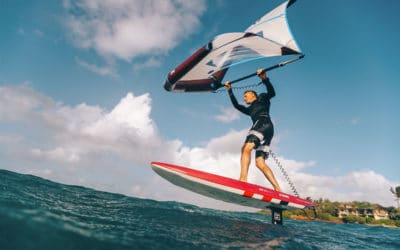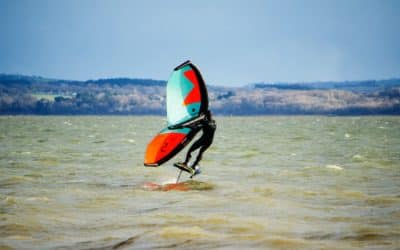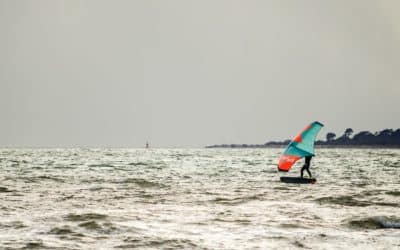The different techniques of wingfoil navigation
Even though the wingfoil has only recently been introduced, it has become very popular with water sports enthusiasts. It can be used with the kitesurf board, of which it is a variant (and therefore follows the same prohibitions regarding permitted spots). However, the techniques may differ. To better understand what wingfoil is, let’s look at the techniques involved in this water sport.
The main techniques of wingfoil
With a larger sail than windsurfing, wingfoil also requires a higher wind speed to launch (from 10 knots depending on the conditions). It is also an excellent practice for all those who want more speed or to do high aerobatics. The wing is held directly at arm’s length. The wing is not attached to the board, so it is very easy to handle.
These characteristics obviously play a major role in the techniques you use to practice.
The first of the techniques that you will need to master is flipping your wing. To begin, you will need to sit on your board and get into the water. Take hold of the leading edge. There are two ways to do this, either turn the wing over using the handles (the most difficult technique), or use the wind by manipulating an ear.
To gain speed once the wing is turned over, the basic technique is to stand up and stay on your feet. Lift the leading edge with one hand and simultaneously lift on the ear with your other hand. To succeed, remember to position yourself well in relation to the wind. The wind should turn the sail easily. Otherwise, you must change your position to face the wind.
Other techniques to know
It is also essential to know how to turn the canopy, and particularly how to turn it in flight. Here again, there are two solutions.
The first is to perform a front side jibe. To do this, you have to do an edge grip with your toes. The second is the back side jibe which is done with a curve on the heels. You may only be able to master one of these two techniques, but if you really want to have fun in wingfoil, you’d better know both perfectly. This will allow you to respond to the change of foot in the best possible way and to manoeuvre in the best possible way during your stance.
Another technique to know is the waterstart. This technique will depend on the size of your board. If you have a small board (less than 45 litres), the waterstart will be essential. In the case of a larger board (from 55 litres), the perfect mastery of this technique is less necessary. You can then choose between waterstart with straps or without. In the first case, you have to balance with your wing and then push the board into the water with both hands. Position your feet correctly in the straps.
The other technique, the strapless waterstart, can also be used. The start is done sitting down, then you have to get on your knees. To do this, you have to balance yourself with your hand. Then you just have to get upwind with your hands.
Another important technique in wing is to know how to turn (jibe to switch). To do this, you need to control your speed with a crosswind. The principle is to tilt your board in the water horizontally. Then once your wing is over your head, you will have to position your hands carefully once the tailwind arrives. Switch your feet before the curve and pump.
A good knowledge and mastery of the techniques
In order to have the best and safest time on your wingfoil, it is very important to master these techniques. Even if you are good at it, it is best to go to a wingfoil school before you head out into the open sea, which will teach you the basics of the sport, as well as the different techniques that are essential for safe practice. This is really essential to avoid any risk, as soon as you leave the water.
If you live in Hyères or if you are on holiday in the area, you can contact the KGG school. Our instructors will help you learn the basics and techniques of the sport. You will be able to excel and have fun while practicing wingfoil in the best conditions and in total safety.
Search
Catégories
Recent Posts
Suivez-nous !

